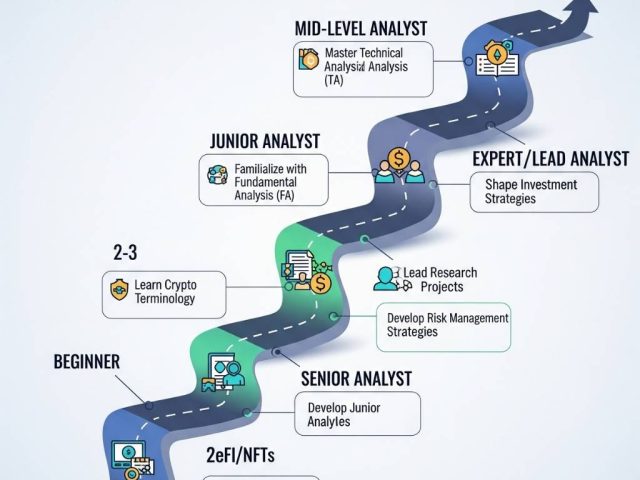The cryptocurrency market thrives on innovation and disruption. However, amidst the whirlwind of new projects and technological advancements, a hidden factor is brewing beneath the surface with the potential to significantly impact prices: low float cryptocurrencies with large future unlocks.
This article delves into the concept of float, its role in market capitalization, and the rising trend of low float cryptocurrencies within the top rankings. We’ll explore the potential consequences of these massive token unlocks on the horizon and equip you with valuable insights to navigate this evolving landscape.
Understanding Float and Market Capitalization
Before diving into the intricacies of low float crypto and its future implications, let’s establish a clear understanding of two key concepts: float (circulating supply) and market capitalization.
What is Float (Circulating Supply)?
Float, also known as circulating supply, refers to the number of cryptocurrency tokens that are readily available for trading in the market. Imagine it as the actual number of coins or tokens that are currently in people’s wallets and actively being exchanged on cryptocurrency exchanges.
What is Market Capitalization?
Market capitalization (market cap), on the other hand, represents the total value of a cryptocurrency. It’s calculated by multiplying the circulating supply (float) by the current price of the token. Think of it as the total worth of all the cryptocurrency tokens in existence, if they were all sold at the current market price.
The Ratio Between Float and Market Cap: A Window into Potential Price Movements
Here’s where things get interesting. The ratio between float and market cap offers valuable insights into a cryptocurrency’s potential price movements. A low float, relative to the market cap, suggests a higher concentration of ownership and potentially greater price volatility. In simpler terms, if there are fewer tokens readily available for trading, even minor shifts in demand can cause significant price fluctuations.
The Rise of Low Float Cryptocurrencies
The landscape of the top cryptocurrencies is experiencing a shift. Traditionally, established projects boasted high circulating supplies, ensuring wider distribution and a more stable market presence. However, a new trend is emerging:
Why Are Projects Launching with Low Float?
There are several reasons why projects might choose to launch with a low float:
-
Funding and Development: By keeping a significant portion of tokens locked initially, projects can secure funding for ongoing development without immediately flooding the market with tokens, potentially depressing the price.
-
Community Building: A limited initial supply can foster a stronger sense of community among early adopters who hold a larger percentage of the total supply.
-
Hype and Speculation: Limited availability can create a perception of scarcity, driving up demand and potentially inflating the price in the short term. Examples of Low Float Top Cryptocurrencies
Several top cryptocurrencies currently exhibit this low float characteristic. According to CoinGecko research (https://www.coingecko.com/en/exchanges/crypto_com), some notable examples include:
- Chainlink (LINK): With a circulating supply of around 460 million tokens, LINK represents a relatively low float compared to its position among the top cryptocurrencies.
- Uniswap (UNI): This decentralized exchange token boasts a circulating supply of roughly 1 billion tokens, yet ranks high in market cap, highlighting its low float.
It’s important to remember that this list is not exhaustive, and the landscape is constantly evolving.
Potential Impact of Large Future Unlocks
The trend of low float cryptocurrencies within the top rankings comes with a significant caveat: large future unlocks. Many of these projects have allocated a substantial portion of their total supply for future distribution. These locked tokens can be earmarked for various purposes, such as team rewards, foundation grants, or future ecosystem development.
Here’s how these large future unlocks can potentially impact the market:
Increased Sell Pressure and Price Volatility
When these locked tokens are eventually released and become part of the circulating supply, it can significantly increase the number of tokens available for trading. This influx can lead to increased sell pressure, potentially driving down the price of the cryptocurrency, especially if demand doesn’t keep pace with the additional supply. This can trigger periods of high volatility, making the market more susceptible to sudden price swings.
Dilution and Long-Term Value
The release of a large number of tokens can also lead to dilution, a situation where the overall value of each individual token is reduced. Imagine a pie representing the total value of the cryptocurrency. As more tokens are unlocked and added to the market, the pie gets bigger, but each slice (individual token) becomes proportionally smaller in terms of value. This can raise concerns about the long-term viability of the project, particularly if the unlocked tokens don’t contribute meaningfully to the ecosystem’s growth.
Navigating the Low Float Landscape
With the potential risks of low float crypto and large future unlocks in mind, how can you navigate this evolving landscape as an investor? Here are some key strategies to consider:
Considering Market Cap to Fully Diluted Valuation (FDV) Ratio
The market cap reflects the current value based on the circulating supply. However, to gain a more comprehensive picture of a low float cryptocurrency’s potential valuation after future unlocks, consider the Fully Diluted Valuation (FDV). This metric takes the total supply (including locked tokens) into account and provides an estimate of the market cap if all tokens were unlocked and circulating. By comparing the market cap to the FDV, you can gauge the potential impact of future token releases on the price. A significant difference between the two suggests a larger potential price drop after unlocks.
Researching Project Fundamentals and Utility
Don’t solely rely on the tokenomics (token distribution and economics) of a project. It’s crucial to delve deeper and research the project’s fundamentals. This includes understanding the underlying technology, the team’s expertise, the project’s roadmap, and its overall utility within the crypto ecosystem. A strong project with a clear purpose and real-world application is more likely to weather the storm of future token unlocks if it delivers on its promises.
Diversification as a Risk Management Strategy
The crypto market is inherently volatile, and low float cryptocurrencies add another layer of risk. To mitigate these risks, consider diversification as a core strategy. Allocate your investments across a variety of crypto projects with different risk profiles. This approach helps spread your risk and protects your portfolio from potential price swings in any single low float cryptocurrency.
The Evolving Crypto Market: A Balancing Act
The rise of low float cryptocurrencies within the top rankings reflects the dynamic nature of the crypto market. It’s a balancing act between:
Innovation and Growth Potential
Low float projects often represent innovative startups with disruptive ideas. Limited initial supply can fuel early growth and attract investors seeking high-risk, high-reward opportunities. These projects have the potential to become the next big players in the crypto space, but careful evaluation is crucial.
The Importance of Long-Term Vision
Investing in any cryptocurrency, particularly low float ones with substantial future unlocks, requires a long-term perspective. Don’t get caught up in short-term hype and speculation. Focus on projects with strong fundamentals, a clear roadmap to address potential dilution through utility and adoption, and a team committed to building a sustainable ecosystem.
By understanding the potential risks and rewards associated with low float cryptocurrencies, you can make informed investment decisions that align with your risk tolerance and long-term investment goals.
Conclusion: Weighing the Risks and Rewards
The low float trend in top cryptocurrencies presents a unique investment opportunity. These projects can offer high growth potential fueled by innovation and limited initial supply. However, the looming threat of large future unlocks introduces significant risks of increased sell pressure, price volatility, and potential dilution.
The key takeaway? Do your research! Don’t be blinded by the allure of low float and high potential returns. Carefully evaluate the project’s fundamentals, tokenomics, and roadmap. Understand how the team plans to address future unlocks and ensure their vision translates to real-world utility and long-term value creation.
Remember, the crypto market is a marathon, not a sprint. By approaching low float cryptocurrencies with a cautious and analytical mindset, you can position yourself to capitalize on the potential rewards while mitigating the associated risks. For Indepth Analysis of crypto projects visit Scentia Platform Register Now Its Free





